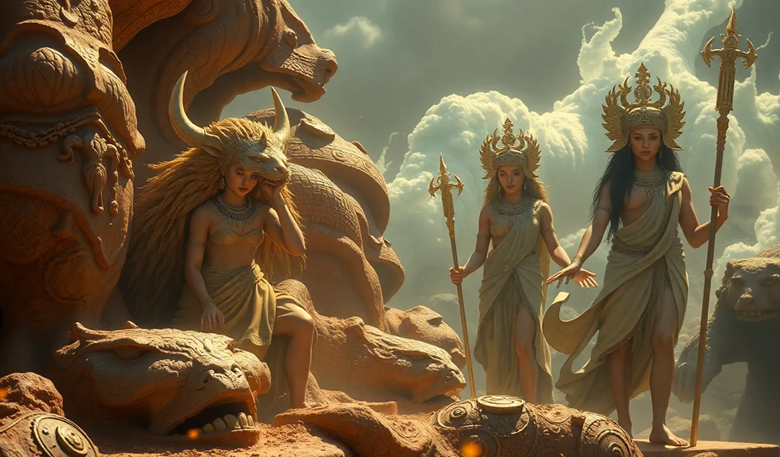WORSHIPPING FEMINITY AROUND THE GLOBE

News Mania Desk / Piyal Chatterjee / 28th October 2024
While Bengal gears up for worshipping Female goddesses across global mythologies epitomize the essence of power, wisdom, and creation. Revered for their multifaceted roles as nurturers, warriors, and protectors, figures like Athena, Kali, and Hathor transcend cultural boundaries, embodying the divine feminine’s complexity and influence in shaping human beliefs, natural forces, and cosmic balance
Although the initial practitioner of Buddhism, Siddhartha Gautama, was a man, Buddhism has many distinct Buddhas, some of whom are female. There have been numerous female Buddhas after Gotam? Among the most wellknown is Tara, who represents kindness and defense in certain traditions, both on Earth and on the journey toward enlightenment. She is said to play numerous roles in the faith and to reside in every devout woman. Tara has a fierce side, just like the most of the female goddesses we’ve studied. She can take on the forms of a yellow incarnation of wrath, a crimson goddess of love, or a blue goddess of destruction.
Early Semitic texts identify Asherah as the companion of Yahweh, the god who would later become the monotheistic god of Judaism, and the Sumerian god Anu. Many people believe that Asherah was real and possibly even a reworking of the Mesopotamian goddess Ishtar. There is substantial disagreement about whether Asherah the goddess was ever worshipped at all, and some archaeologists believe the term only relates to an object. In any case, there is proof that ancient Semitic women did practice a particular, cult focused on women. It is likely that Jewish matriarchs continued to worship Asherah occasionally even after Judaism became a monotheistic religion and the Hebrew Bible became the primary scripture of the faith.
African traditional religions have a rich and complex history. Many early African faiths were polytheistic, like other ancient religions, and frequently honored strong female goddesses who served as models for contemporary goddess worship.Oshun is one of this faith’s most well-known goddesses; she is a spirit or divinity that symbolizes one of God’s incarnations. In addition to ruling over rivers and freshwater, pleasure, fertility, and love, she also symbolizes everything from conception to governmental authority and is frequently seen as the origin of all life. Oshun was the lone female among a group of primordial spirits known as the Irunmole, who were dispatched to build the world, according to the holy Yoruba literature known as the Ifa literary corpus. Disregarded by the masculine spirits, Oshun assembled a group of females known as Iyami Aje. The male Irunmole deities were unable to create the world without Oshun’s assistance. Oshun returned to them at that point and informed them that without a balance between feminine and masculinity, nothing could be accomplished.
The presence of feminine goddesses across diverse cultures worldwide reflects the universal reverence for female strength, nurturing, wisdom, and creativity. From ancient mythologies to contemporary beliefs, goddesses have embodied qualities ranging from fertility, love, and beauty to war, death, and transformation. They serve as powerful symbols of resilience and empowerment, challenging stereotypes about femininity and offering role models that encompass a full spectrum of human experience. These goddesses not only reveal a deep connection to nature and life cycles but also remind us of the balance and harmony necessary in the world. By studying feminine deities from various traditions, we gain a richer understanding of the values, aspirations, and complexities of different societies. The legacy of these goddesses continues to inspire and empower, reminding us of the enduring strength of the feminine divine and its timeless relevance in shaping our collective human identity.






